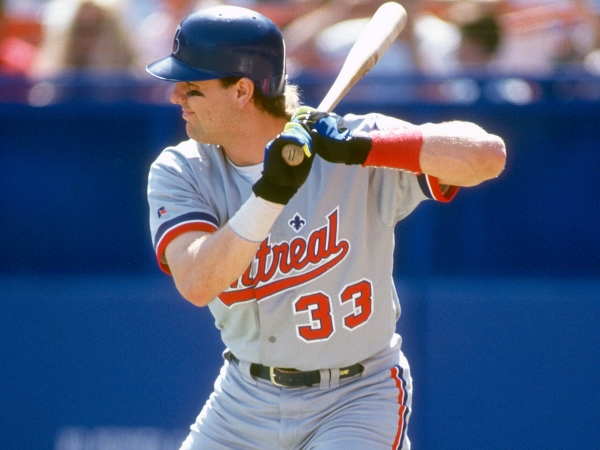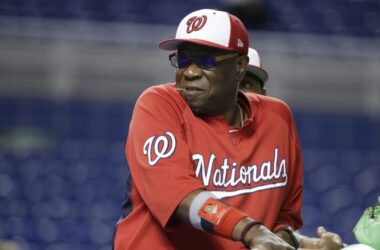For only the fourth time in Baseball Hall of Fame history, members of the Baseball Writers Association of America elected four players to the Hall on Jan. 24, as Chipper Jones, Jim Thome, Trevor Hoffman, and Vladimir Guerrero all found themselves on the right end of a phone call. Guerrero, one of three former Montreal Expos on the ballot, both pleased and disappointed Expos fans: He made it into the Hall, but subsequently chose to don a Los Angeles Angels cap on his plaque—becoming the first player from that storied franchise to do so.
Although Guerrero found his rightful place in the Hall of Fame, former Expos and Colorado Rockies outfielder Larry Walker was not so fortunate. Even having received his highest-ever vote percentage on this ballot—at a shade over 34 per cent—time is running out for the Canadian-born outfielder to make it over the three-quarters of the vote barrier for admission to the Hall. Only two of his 10 years of eligibility remain, so Canadian baseball fans have already turned their attention to next year’s ballot, as they help to promote his cause.
Walker ranks among the Canadian greats: The first Canadian player to win Most Valuable Player in MLB history, he now holds the position of Team Canada hitting coach. His contributions to baseball have extended beyond his wonderful playing years and they merit recognition in the ultimate way. Yet, although Walker deserves his place in Cooperstown, his prospects look grim. With two years to go, the support that comes from here on out looks to be too little, too late for the Canadian outfielder, as he likely becomes yet another worthy candidate to fall victim to a stuffed ballot.
For one, Jay Jaffe, Sports Illustrated’s in-house Hall-of-Fame expert, noted that no eighth-year candidate with voting percentages that low has ever been elected. This includes the players elected under the previous voting system, which allowed them to remain on the ballot for up to 15 years. Even considering his well-rounded statistical case, Walker’s lack of writer support is no mystery.
With a troublingly small 10-vote limit, every voter finds ways to cut their ballot down. To do so, they lean on silly narratives that have nothing to do with the player’s actual baseball skills—sometimes keeping deserving players on the outside looking in. For Barry Bonds and Roger Clemens, voters cite steroid use, even though Bud Selig—the commissioner of baseball who let steroid use run rampant under his watch—was elected into the Hall of Fame last year.
Walker’s narratives aren’t quite as simple. In a column dissecting Walker’s candidacy, Jaffe pointed out that Walker totalled over 72 Wins Above Replacement (WAR)—baseball’s go-to statistic to measure a player’s value. That mark is the 11th best by any right fielder in league history. All 10 ahead of him are Hall-of-Famers.
Instead, the old-school baseball community prefers “eye test” metrics and simple counting stats, both of which do not tell Walker’s full story. This means the tremendous value Walker added elsewhere—particularly his baserunning and defence, both accounted for in WAR—has gone unrecognized. Unfortunately, while the old-school community discounts the new-fangled numbers, the new-school community has trouble overcoming the Coors effect, an overblown theory that the high altitude and the thin air boost hitting statistics. On top of that, neither party takes a look at his extensive contributions to Canadian baseball.
Walker grew up wanting to play hockey, but his baseball success inspired many young Canadians to follow in his footsteps. Unfortunately, it seems unlikely that Walker will find any more success on next year’s writer’s ballot than he did this time around.









